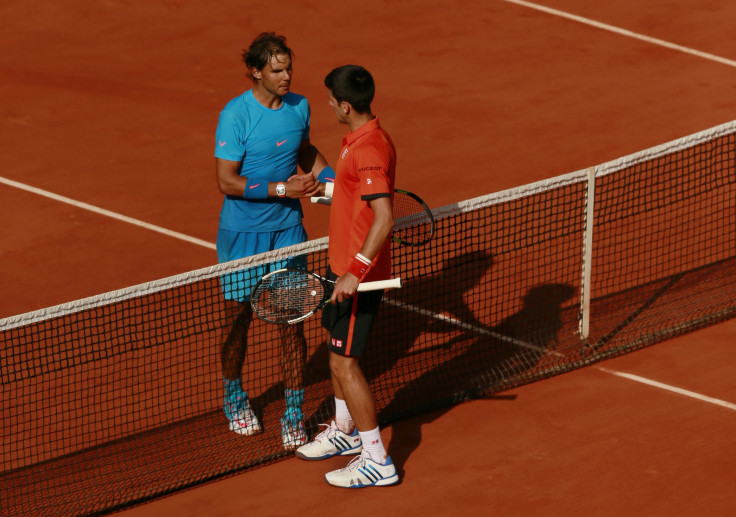Why Does Rafael Nadal Dominate On Clay? Federer, Djokovic And Others Explain

World No. 1 Rafael Nadal is set to begin his clay-court campaign this week in the Monte-Carlo Masters as he looks to defend his points from last year.
After an injury prone 2018 so far with Nadal last featuring in the Australian Open quarterfinal in January, the Spaniard will make his competitive return to action in the second round in Monaco against Aljaz Bedene on Wednesday.
Nadal has a tough task though, as he needs to win all the clay events he won from last year in order to remain at the top of the rankings. But if anyone can do it, especially on this surface, it is the 31-year-old. Nadal is known as the "King of Clay" and even at his age, dominated the clay swing last year winning every title, including a record-breaking 10th French Open crown, except for the Rome Open.
But with an Open Era record of 53 clay titles, what is it about the surface that makes Nadal so superior to other players?
According to Roger Federer, who has beaten Nadal just twice in 15 meetings on clay, his movement, style of play and mastery of the surface is what gives him the edge.
"Clearly Rafa has always had an advantage over me on a clay court and the record confirms that," Federer said, as per Tennis 365. "I tried many different things to change that head-to-head, changing a few things on my backhand, looking at different tactics, but he had the answers on clay."
"We see our matches on other surfaces are quite close, but this is where he has been dominant and at this point in my career, I have to give myself the best chance of winning tournaments and that is why I missed the clay court season (in 2017 and now in 2018)," he said. "His movement is so impressive on clay and his game fits the surface perfectly. I feel like I can play well on clay, but it is physically demanding and Rafa has mastered that surface better than anyone."
Andy Murray also agrees with Federer that Nadal's movement on the surface helps him such that he does not need time to adapt to it compared to hard or grass-courts.
“You see the way Rafa moves on clay and that helps him so much," Murray said. "Also, he doesn’t need time to adapt to it and that helps him."
Tennis legend Boris Becker is also in agreement about Nadal's movement but adds that the spin he puts on the ball also has a big effect as well as the daunting aura he projects on the surface.
“First of all, his movement on a clay court is exceptional," Becker stated. "The spins he can put on the ball is incredible and it has a bigger effect on this surface and he also has an aura that make it tough for his opponent to believe he can be beaten on clay."
Novak Djokovic has fared better than most against Nadal on clay, beating the 16-time Grand Slam champion seven times in 21 meetings, including their 2015 French Open quarterfinal clash. The Serbian meanwhile, believes Nadal being left-handed reaps many benefits.

"Of course Rafa is the best clay-court player ever. I won the French [Open], Roger won there as well, but every other title for a long time has been Rafa," Djokovic explained. "He is the ultimate challenge on the surface. Look at the record, it is just crazy and this is why beating [him] at Roland Garros meant so much to me."
"He is not called King of Clay for nothing. He is the ultimate challenge on this surface and the player to beat every time we have a clay court tournament for a good reason. He is left handed and that helps his game, he gets amazing angles and shows good invention on the court," he added.
© Copyright IBTimes 2025. All rights reserved.





















